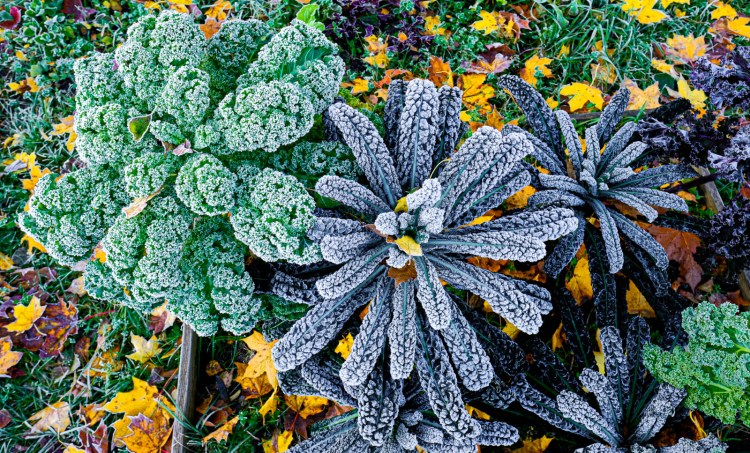This is the time of year we spend waiting for frost. Unlike Godot, and despite climate change, it will come. Some of you, farther north and inland, may already have had your first frost.
The earliest we have ever had a killing freeze in our Cape Elizabeth garden is Sept. 20. That was around 40 years ago, and the temperatures have been getting steadily warmer since then.
Wood Prairie Farm, a family-run organic potato (and other crops) grower in Aroostook County, recently forwarded to its customers a National Oceanic and Atmospheric Administration map that shows first-freeze dates throughout the region. The map is based on data from 1981 through 2010, so I think the frost dates would be a little later now.
According to the map, the median first-freeze date along the coast is Oct. 11. For a sliver of western Maine from roughly Fryeburg to Newport, it’s Oct. 1. For the rest of the western mountains and for eastern Aroostook County, it’s Sept. 21 and for the rest of Aroostook County – where there are a lot of trees and few gardeners – it’s Sept. 11. For those of you who have forgotten, “median” means there were an equal number of occurrences above and below that number. The median is usually close to, but not the same as, the average.
Those dates are not guarantees. Weather changes from year to year, and dozens of print, online and broadcast sources will warn you when an actual frost is coming.
First frost does not signal the start of harvest. That began in May or earlier when gardens began producing lettuce, radishes, asparagus and other vegetables that made summer meals so enjoyable. Nor does it mean the end of the harvest, because some crops will survive – and even improve – when hit by temperatures below 32 degrees.
If the climatologists warn of a hard freeze a week or more before the median date for your garden, it might make sense to grab old blankets or plastic and cover your frost-sensitive plants. The protection will extend the season slightly, letting them grow and ripen a bit longer. We did that early in our gardening lives, but have since decided it isn’t worth the effort.
The vegetables that are going to get killed by a frost include peppers, tomatoes, beans, corn, cucumbers, squash, pumpkins and eggplant. If you get a frost warning and don’t want to go the blanket/plastic route, head outside and pick anything that is edible.
Tomatoes, especially, but also pumpkins and muskmelons, according to the University of Maine Cooperative Extension’s September newsletter, will continue to ripen at room temperature even off the vine (these are known as climacteric fruits), so you can continue to enjoy them for a few weeks.
Potato vines will be killed by a frost, but the potatoes that are underground will be fine as long as you dig them up before the ground freezes solid. Many of our potato vines – fingerlings and other specialty types – died back in late August, but the Maine standards, like Kennebec and Katahdin, continued to grow. If you dig after a frost, bring the potatoes into a shed, garage or basement immediately to cure before you store them.
A few vegetables can withstand temperatures just a few degrees below freezing. These include carrots, beets, lettuce, radishes, spinach and, if you have planted a late crop, peas.
Leeks, broccoli and cabbage will stand a heavy frost, and Brussels sprouts and parsnips – which I’ve never grown – will actually taste better after several frosts.
While the traditional harvest will have ended with frost, or not long after, it doesn’t mean that the work in the garden is necessarily over. I will be planting lettuce under the cold frame in late September, as an experiment.
Either it’ll keep me in lettuce, or it’ll keep me entertained.
Tom Atwell is a freelance writer gardening in Cape Elizabeth. He can be contacted at: tomatwell@me.com
Send questions/comments to the editors.


